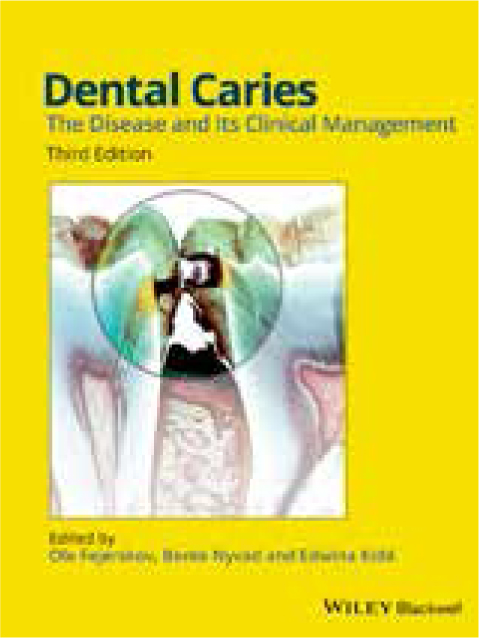Article
Dental Caries: The Disease and its Clinical Management

The first edition of this text book was published back in 2003, since then it has been like a chameleon, changing its cover colour from the original blue/purple, to fuchsia pink (second edition published 2008) and now, in this 2015 third edition, to canary yellow. Colour is not the only thing that has changed with each edition; it has had a battle with its weight, going from 341 pages (first edition) to a colossal 605 page second edition and back to a more manageable 451 pages of text in this edition. Whilst some chapters appear familiar, the book has undergone a considerable re-write and restructure and still remains one of the most authoritative international texts on dental caries. It is written by some of the most eminent academics and clinicians that the subject of cariology has seen and has been carefully edited to read as one coherent text rather than a compilation of publications. It is beautifully illustrated throughout with many high quality, colour, clinical images and clear explanatory graphic and line diagrams.
Dental Caries: The Disease and its Clinical Management has been divided into six main sections each containing between three to six chapters. Section one lays down the scene by explaining what dental caries is and explores the global burden of the disease. In section two, detailed aspects of the histopathology and microbiology of the disease are discussed together with the role that saliva and diet play in this dynamic disease process. Caries diagnosis is comprehensively covered in section three and provides the clinician with good practical advice for clinical and radiographic examination together with an insight into more novel diagnostic techniques. Management of caries, both from a preventive (caries control) and operative point of view, is then covered in sections four and five. The authors, however, take care to explain that metabolism in the biofilm, once formed, cannot be prevented but can be controlled by the patient so that carious lesions do not form and those that have do not progress. Emphasis is obviously on caries control (actions, role and importance of fluoride, oral hygiene and diet) and only treating operatively when absolutely necessary, and when doing so adopting the contemporary minimally invasive concept. The consequences of operative intervention through looking at the longevity of restorations are likened to ‘the death spiral’. Whilst the latter may appear somewhat dramatic, it is supported by a wealth of evidence. The true strength of this section and the final section is the emphasis on individualized patient treatment planning and how experience at the chairside can be taken and applied to specific populations.
Dental Caries: The Disease and its Clinical Management is a must for academics, specialists and postgraduates interested in cariology and for those clinicians for whom management of dental caries plays a significant part of their daily practice. For the undergraduate dental student and other dental healthcare professionals the entire text may be a little heavy going, but with careful and considered guidance from their lecturers the text also provides invaluable supportive and further reading. It will also inspire enthusiasm in the subject of cariology and emphasizes that there is much more to the management of dental caries than simply ‘drilling and filling’.

